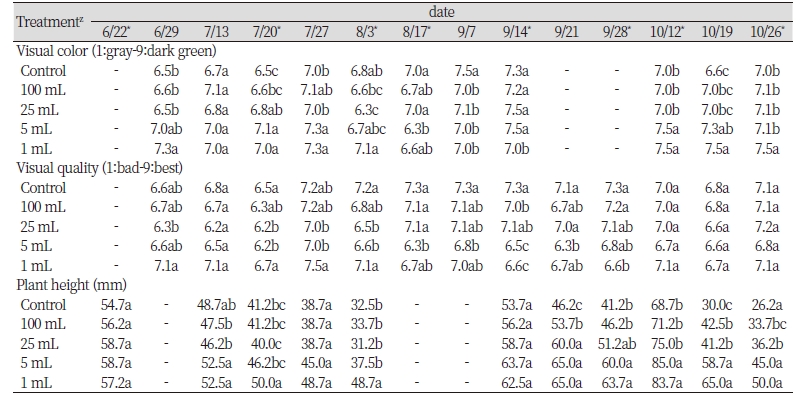Abstract
This experiment was carried out to investigate the growth of Kentucky bluegrass according to the amount and concentration of liquid spray on the leaf surface. A preliminary experiment was carried out from April 2017 at plastic house in Dankook University. In 2018, a field experiment was carried out at Dankook University in Cheonan. A Kentucky bluegrass 'Midnight' was used for in preliminary and field experiments. The amount of water used in plastic house experiment was 100, 25, 5, and 1 mL respectively. GG (13-2-3+trace element) was used as the liquid fertilizer. In field study, liquid application was carried out with a low volume of water (25 mL m-2 ) as a control, and as ultra-low volume of water 1 mL m-2 was used with undiluted, doubled and quadrupled diluted solution. In plastic house experiments, grass color and plant height showed the darker leaf color and longer plant height than the conventional control, and the statistically significant difference was also shown. However, there was no significant statistical difference in visual quality compared to the conventional control. In field experiment, the plant height was the tallest in the 1 mL ultra low-volume (undiluted) treatment in spring and autumn, while the same trend was observed in all treatments in summer. Root length showed similar tendency in all treatments. There was no statistically significant difference in the treatment period between the roots and the control. As a result, 1 mL m-2 ultra low-volume solution showed no difference in the growth of Kentucky bluegrass compared to 25 times and 2 times. Therefore, ultra low-volumes of application can be used for Kentucky bluegrass management.
Figures & Tables



